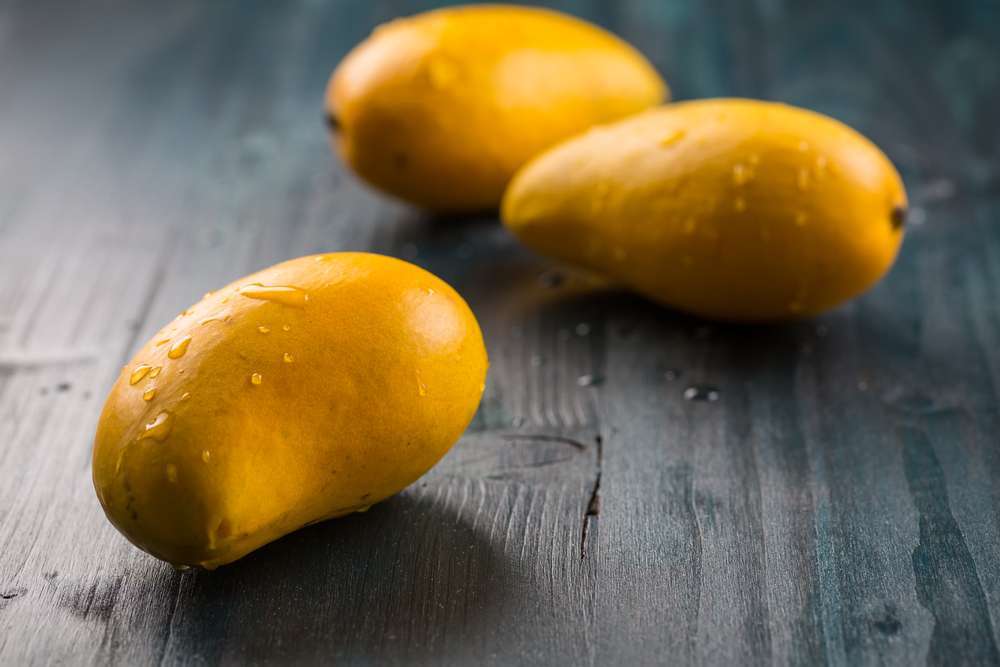The world of fruits is as diverse and intriguing as any, but there’s one tropical gem that stands out – the Honey Mango, also known as Ataulfo or Champagne Mango. With its extraordinary sweetness, unique flavor, and versatile uses, it’s a fruit that deserves the spotlight. In this article, we will unravel the sweet mystery of what a Honey Mango is, explore its distinctive characteristics, and delve into why you absolutely need to try it. Join us on this journey as we explore the enticing world of Honey Mangoes, right here on ReadZiD, a platform that celebrates the beauty of knowledge sharing.
Unmasking the Honey Mango
The Honey Mango, scientifically known as Mangifera indica, is a variety that hails from Mexico, particularly the Chiapas region. Its name, “Honey Mango,” is not just a catchy marketing term; it aptly describes the fruit’s extraordinary sweetness and flavor. But what makes this mango so unique? Let’s peel back the layers and uncover its distinctive characteristics.
Appearance
Honey Mangoes are small and oval-shaped, typically measuring about 4 to 6 inches in length. Their petite size makes them easy to hold and a perfect choice for snacking. The skin of a ripe Honey Mango is a vibrant golden-yellow, and it’s remarkably thin and smooth. While you may find the occasional wrinkle or small blemish, rest assured, these are natural and do not affect the fruit’s quality.
Texture
The true magic of Honey Mangoes lies in their texture. They are celebrated for their buttery and smooth flesh, often described as the creamiest of all mango varieties. Each bite of a ripe Honey Mango offers a velvety, melt-in-your-mouth experience that’s nothing short of exceptional.
Flavor
The name “Honey Mango” is not just a clever marketing ploy; it’s an accurate description of the fruit’s flavor. Honey Mangoes are renowned for their incredible sweetness, characterized by honey-like sweetness with a subtle, tangy undertone. This unique flavor profile sets Honey Mangoes apart from their mango counterparts. It’s like a slice of tropical paradise in every bite.
Nutritional Bonanza
Now that we’ve uncovered the unique characteristics of Honey Mangoes, let’s explore the nutritional benefits that come with this delicious fruit:
Vitamins and Minerals
Honey Mangoes are a treasure trove of essential vitamins and minerals. They are rich in vitamin C, a cornerstone of a healthy immune system. Additionally, they provide a generous dose of vitamin A, vital for maintaining skin and eye health, and vitamin E, a potent antioxidant. The presence of potassium in Honey Mangoes also contributes to maintaining healthy blood pressure levels.
Dietary Fiber
Honey Mangoes are not just a sweet treat; they are also a rich source of dietary fiber. This dietary fiber promotes digestive health, prevents constipation, and imparts a feeling of fullness, making Honey Mangoes a satisfying and healthful snack.
Antioxidants
Honey Mangoes contain a variety of antioxidants, including beta-carotene and quercetin. These antioxidants play a pivotal role in combating oxidative stress and reducing the risk of chronic diseases. The presence of antioxidants in Honey Mangoes adds to their appeal as a healthful fruit.
Low Calorie Content
Surprisingly, despite their incredible sweetness, Honey Mangoes are relatively low in calories. This makes them a guilt-free indulgence, allowing you to enjoy their lusciousness without worrying about your calorie intake.
Selecting and Ripening Honey Mangoes
Selecting the perfect Honey Mango is a sensory experience. Here are some tips to help you choose the best fruit:
Color: Opt for Honey Mangoes with a vibrant yellow color, minimal green, and slight wrinkling on the skin, which is perfectly natural and does not indicate overripeness.
Texture: Gently squeeze the mango; it should yield slightly to pressure without being overly soft.
Smell: A ripe Honey Mango will emit a sweet, fruity aroma from the stem end, indicating readiness for consumption.
To ripen a Honey Mango, place it at room temperature. Over a few days, it will continue to ripen and become even sweeter. Once it reaches the desired ripeness, store it in the refrigerator to extend its shelf life.
Conclusion
The Honey Mango is more than just a fruit; it’s an experience, a journey, and a tropical delight. With its exceptional flavor, creamy texture, and diverse culinary applications, it’s no wonder this mango variety is cherished by mango enthusiasts worldwide. Whether enjoyed fresh or as an ingredient in various dishes, the Honey Mango invites us to savor the natural beauty and abundance of the world.
So, the next time you come across these golden treasures at your local market, don’t hesitate to seize the opportunity to experience the magic of Honey Mangoes for yourself. ReadZiD celebrates the spirit of knowledge sharing and invites you to explore the sweet mystery of Honey Mangoes. While we don’t sell mangoes, we’re here to provide you with information, insights, and a taste of the world’s natural wonders, one article at a time.
Also read: Investing in Vietnam: Navigating Opportunities in Real Estate and Infrastructure
